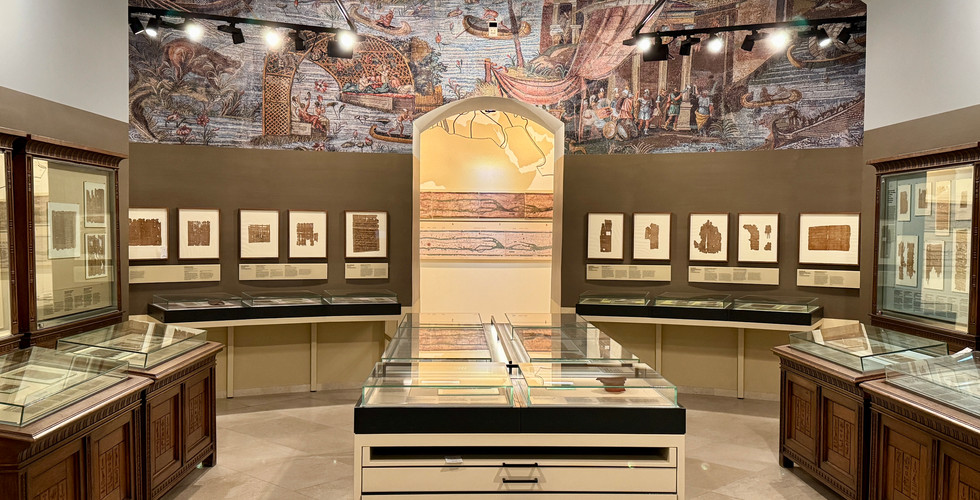I wonder if you are interested in reading a credit agreement between two soldiers to the value of 200 drachmas. However, when you know that the agreement was signed about two thousand years ago, it might become slightly more interesting. Join us for a visit to the unique Papyrus Museum in Vienna.

The Vienna museum is one of the most extensive collections of its kind with a huge variety of writing materials and languages that were used in Egypt between 1500 B.C. and 1500 A.D. Some 180,000 papyri make the essence of the museum and they are an extremely important contribution to our historical understanding of the pharaonic period and Egyptian antiquity. Actually it is one of the largest collections of ancient documents in the world. There are documents in a bunch of languages and different alphabets that were used across centuries: hieroglyphics and hieratic writing as well as Demotic, Coptic, Greek, Latin, Hebrew, Aramaic and Arabic. Their content ranges from literature and educational texts to magical and religious transcripts and books on finance, medicine, law and the military.
Some scholars seem to find the Egyptian book of the dead of Sesostris from the 15th century BC as the best thing that there is to offer. You will see it right at the start of the museum in the section presenting funerary cults. Is is more interesting than e.g. the oldest book of the series of seven boos from the second and third century AD presenting a redundant list of land taxes…
When it comes to stuff other than papyri, the reproduction of the famous Tabula Peuringeriana is the only surviving example of the 13th century document, itself a copy of an illustrated Roman road map!
The collection is named after Erzherzog Rainer who acquired the majority of it in the late 19th century and continuously expanded it. In 1899, he gifted the papyrus collection to his uncle, Emperor Franz Joseph I who then presented it to the then Hofbibliothek, the Austrian National Library today.
The museum is located in the Neue Burg wing of the Hofburg palace. Besides papyri, the collection includes papers, records on clay tablets, stone tablets, inscribed wood and wax trays, leathers, sheepskins, textiles, and bones, as well as gold, silver and bronze articles with inscriptions. The museum was opened in 1999 and added to UNESCO’s Memory of the World Programme Register in 2001.
The museum is located in the basement of the Hofburg Library section. It is accessible - use the left ramp to enter through the central gate of the Neue Hofburg and then take the lift down to the basement. Barrier free loos can be found at Heldenplatz: both ground floor and with a lift at the bookstore.
There is no museum shop but you might find at least some gifts for the umpteenth cousin in the joint Hofburg museum shop next door. There is also no museum café but the Hofburg quarters are full of expensive cafés for tourists, just step out and enjoy an overpriced Mélange.
Papyrus Museum
Neue Burg, Heldenplatz, 1010 Vienna












Comments